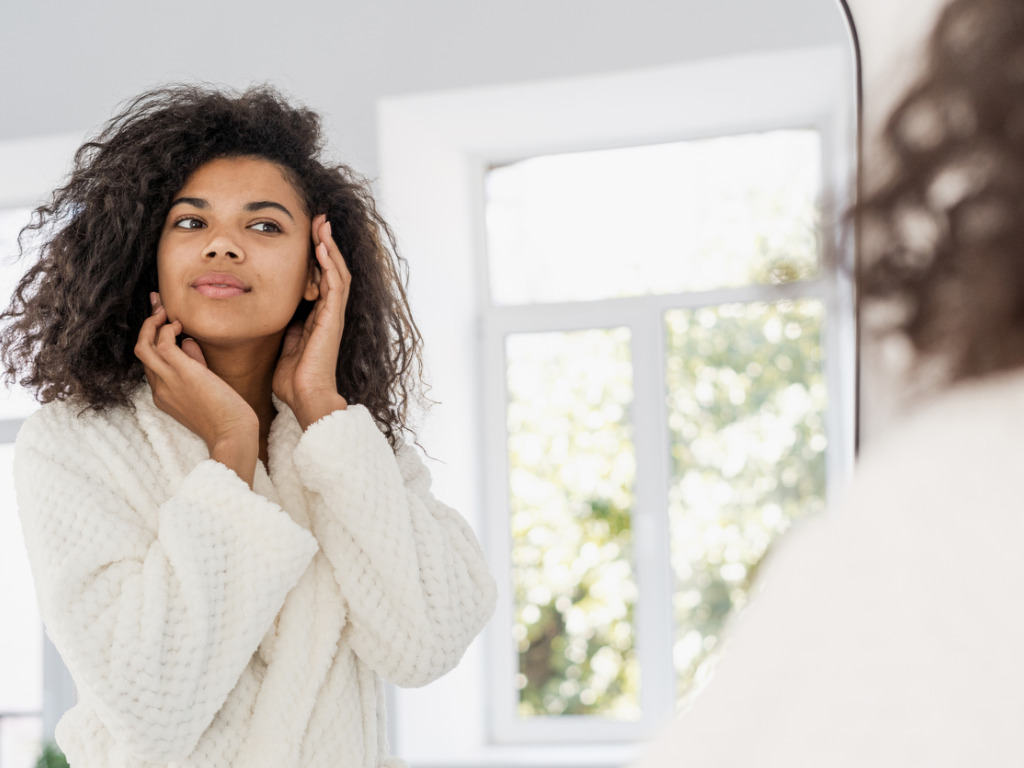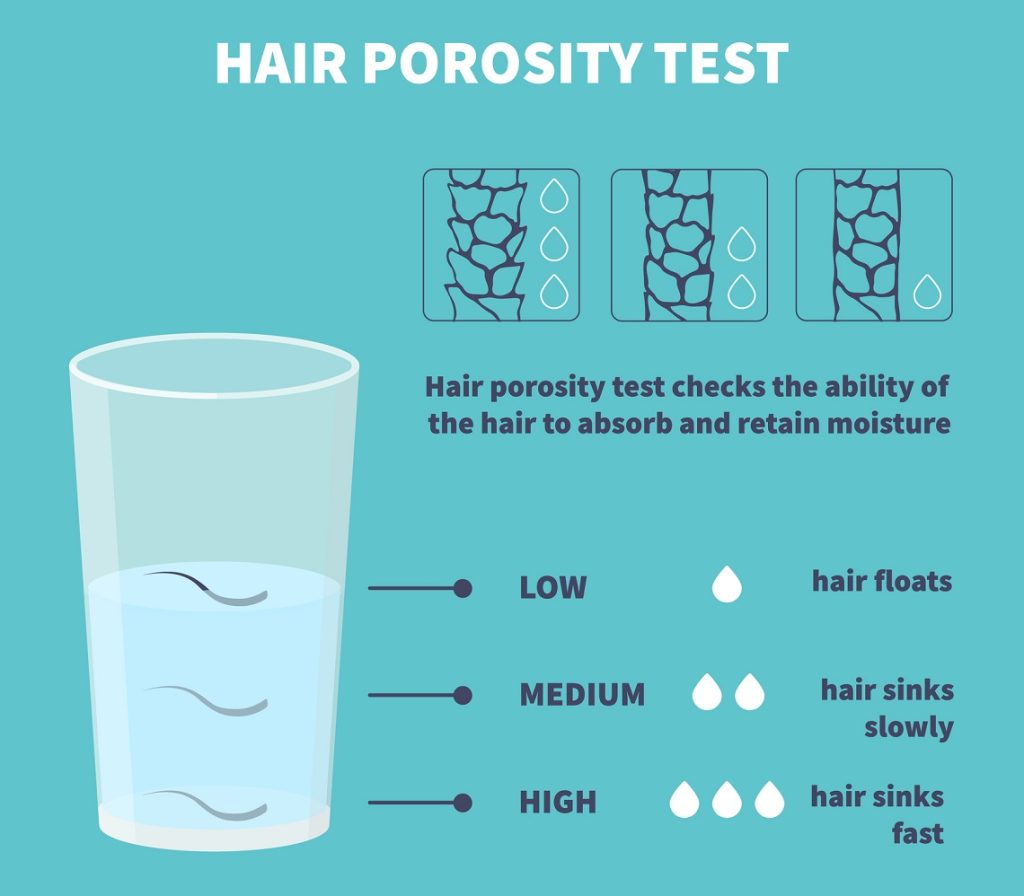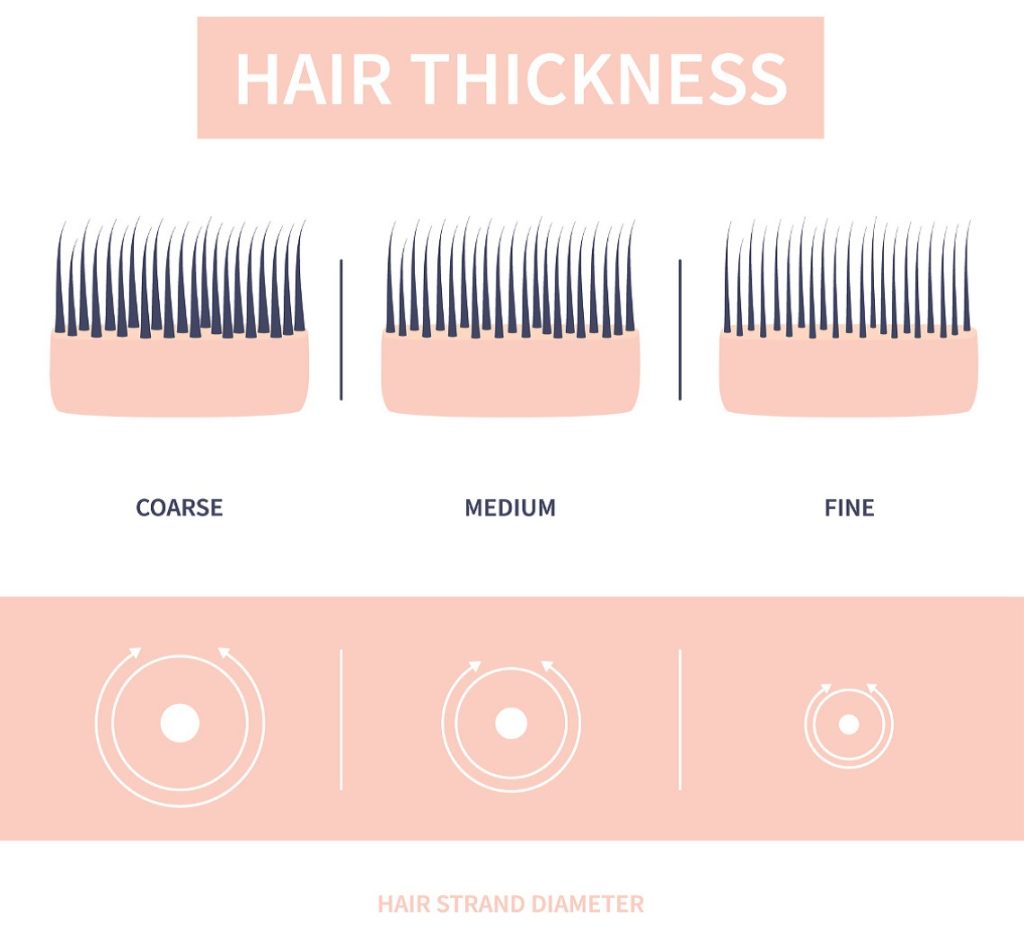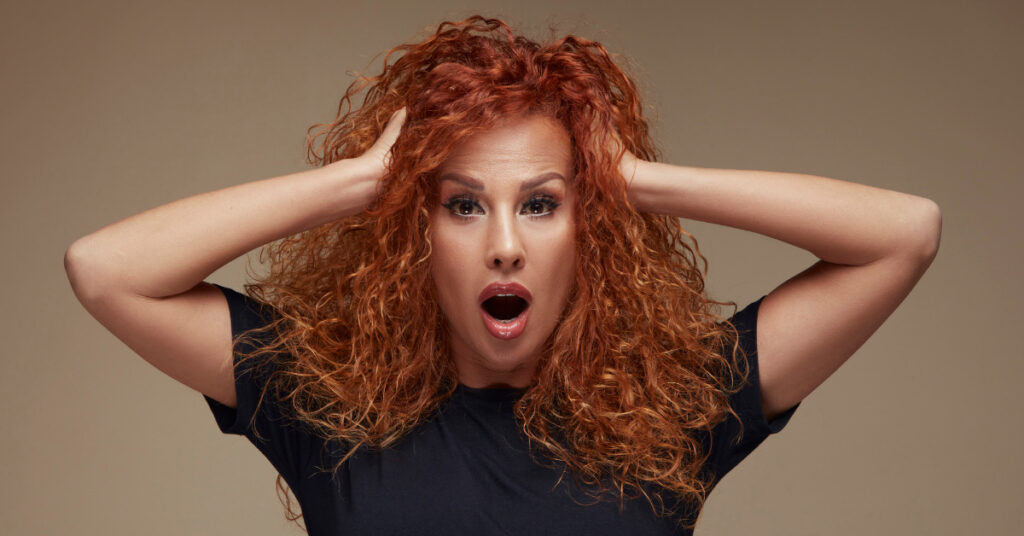Curly hair comes in a variety of different shapes, sizes, colours, and textures. There is no “one size fits all” when it comes to taking care of curly hair. Another person’s curly hair routine may not be fit for you.

To unlock your curly hair’s full potential, it’s vital to identify the type of curls you have. Since the 1990s, the Andre Walker Hair Typing system has been widely adopted as the standard hair classification chart that is used by everyone to determine their hair type.
Currently, there are four hair types according to the Andre Walker Hair Typing System, with subcategories labelled A, B, and C.
Type 1: Straight Hair
- 1a: Pin straight hair with no curls present
- 1b: Mostly straight with a hint of waves
- 1c: Relatively straight with some bends and flicks towards the ends
Type 2: Wavy Hair
- 2a: Slight wave, hair forms a loose “S” shape
- 2b: Tighter “S” shaped waves
- 2c: Really defined waves with some curls
Type 3: Curly Hair
- 3a: Large but loose curls
- 3b: Medium-sized curls with a tighter pattern and more voluminous
- 3c: Tight curls and coils with high density
Type 4: Coily Hair
- 4a: Tight coils with an “S” pattern
- 4b: “Z” shaped coils with a less defined pattern
- 4c: Extremely tight, small coils; with no defined pattern
Here’s a more comprehensive chart with more details to help you understand the differences between the curl types. Type 1 curls were excluded as we’ll focus mainly on curly to coily hair.
| Type 2 | Type 3 | Type 4 | |
|---|---|---|---|
| A- Loose Curls |
2A
|
3A
|
4A
|
| B – Medium Curls |
2B
|
3B
|
4B
|
| C – Tight Curls |
2C
|
3C
|
4C
|
A person with type 3 hair may not be able to effectively follow the hair care routine of a person with type 1 hair as their hair structure varies greatly.
It’s also not uncommon for people to have a combination of curl patterns. They may have type 4C hair on their crown but can also have type 4A at their temples. Although you may have a combination of hair patterns on your head, your hair will still stick to one hair type (either you are wavy or coily).
Don’t be discouraged if it seems like your hair doesn’t resemble the illustrations in the hair chart.The reality is that there are people whose hair won’t perfectly fit into one sub-category. However, the HTCS chart can serve as a helpful guide in identifying which category and subcategory fits your curl pattern best.
How to Identify Your Curl Pattern

It can be overwhelming and confusing to attempt to decode your curl type. Most curly-haired people have many different textures on their hair. However, determining your hair type is actually quite simple. Here are some steps you can follow:
Start with a Clean Head of Hair
The first step is to make sure your scalp is clean, fresh, and free from any oils or styling products. You can use clarifying shampoo to ensure that your hair is thoroughly stripped from hair styling products and is in its complete natural state.
Thoroughly Dry Your Hair
To accurately determine your natural curl pattern, it’s important to get your hair utterly dry. You can either pat your hair dry with a microfibre towel or use a hairdryer with a diffuser attachment on a low heat setting.
Section Your Hair
Once your hair is completely dry, divide it into 4-6 sections. Use hair clips or hair ties to secure each section in place and ensure that you don’t miss any patches of hair.
Look at Your Curls Closely
Now that you’ve sectioned your hair, it’s time to examine your curls carefully. Thoroughly observe the shape of each curl and how tight it is, does it spiral or zigzag? Some sections may have different patterns, and it’s totally normal! The goal is to determine which pattern is the most common in your observation.
Use a Curl-Type Chart
After noting down your observations, it’s time to pull up your curl-type chart. Compare your curl’s characteristics with the descriptions and pictures on the chart.
After following these steps, you should have an idea on what your natural curl pattern is. However, if your hair has been chemically damaged, then your true curl pattern may have been altered.
If you have damaged hair, the best way to examine your curls is by observing the hair strand and the difference between the pattern of your curls at the root compared to the pattern towards the ends.
Check Your Hair’s Porosity, Elasticity, and Thickness
In addition to your curl pattern, you should consider checking your hair’s porosity, elasticity, and thickness as well to completely personalize your hair care routine to achieve the best results.

Porosity
Porosity refers to the ability of your hair strands to absorb and retain moisture. It’s a key indicator of your hair’s health. Your hair can either be “high porosity” or “low porosity.”
Your hair has “high porosity when it can easily get wet but doesn’t retain water that well. On the other hand, people with low porosity hair have a hard time getting their hair wet, but once it does, it can retain moisture well.
Your hair has medium porosity when it absorbs and retains moisture well at the same time.
To identify your hair’s porosity, you can do a simple “float test” by taking a strand of clean, dry hair and dropping it in a glass of water. Observe the strand of hair for 2-4 minutes. If it sinks quickly, you have high porosity hair. If it stays on the surface, then you have low porosity, and if it floats in the middle, then you have medium porosity.
Elasticity
Elasticity is the ability of your hair to stretch out and return to its original shape. As we know, hairs are made up of 95% of protein called keratin. Your hair needs this protein to maintain the elasticity of your hair and make it strong.
Your hair can either have high, medium, or low elasticity. You can test out your hair’s elasticity simply by getting a wet strand of hair and stretching it.
Your hair has high elasticity when it can stretch and return to its original form without breaking. If your hair stretches and slightly returns to normal, then you have medium elasticity.
Meanwhile, your hair has low elasticity when your hair can’t properly stretch and breaks off easily.


Thickness
Some people often confuse hair thickness with hair density. Hair thickness is the actual diameter of each strand of hair, while your hair density refers to the closeness of your hair follicles. Which means you can have fine and dense hair at the same time.
To check the thickness of your hair, you can use the “thread test.” All you need is a piece of sewing thread and a strand of your hair. If your hair is thicker than the thread, then you have thick hair; If your hair is a little bit thinner than the thread, then you have medium hair. But, if your hair strand is significantly thinner than the thread, then you have thin strands.
Your genes influence the thickness of your hair. The thickness of your hair can help you determine how tough or fragile your hair is.
Why Identifying Your Curl Pattern and Hair Type Matters
Identifying your curl pattern and hair type is the key to finding the best hair care routine for your hair. Having a more targeted approach to your hair care allows you to prevent damage by having all the necessary insight into how your hair reacts to heat, chemicals, and hair care products.
Products that can work for other curly people may not work for you. For example, protein treatments may be beneficial for people with high-porosity hair, but they may not yield the same results for people with low-porosity hair types.
This is why determining and understanding your hair type and curl pattern is essential. This may seem overwhelming at the beginning, but this is a great first step towards healthier hair.



